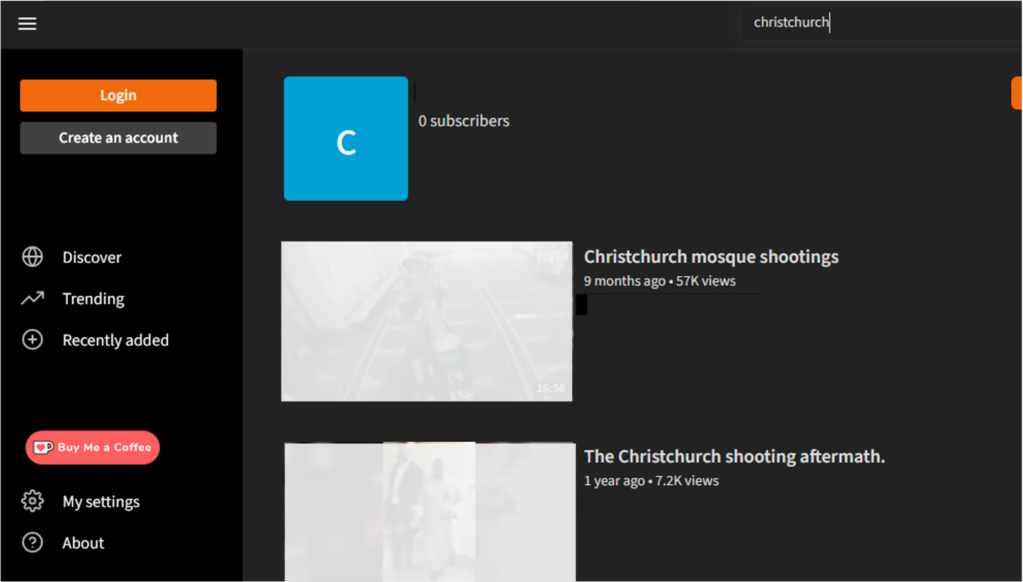Are you prepared to confront the raw, unvarnished truths of existence, the kind that the mainstream media often shies away from? The exploration of "gore" websites, those digital spaces dedicated to graphic depictions of violence and death, offers a disturbing yet undeniably captivating glimpse into the darker corners of the human experience.
The digital landscape is vast and varied, offering a seemingly endless stream of content for every conceivable interest. Within this expanse, a subset of websites, often referred to as "gore sites," have carved out a niche for themselves. These platforms are dedicated to the dissemination of graphic content, primarily focusing on real-life violence, death, and injury. This content can range from depictions of accidents and acts of violence to executions and acts of self-harm. These sites, often operating in the shadows, attract a particular audience, drawn to the shock value, the morbid curiosity, or perhaps, a deeper exploration of the human condition.
It is important to understand that exploring such content carries significant ethical and psychological implications. The potential for desensitization, emotional distress, and the normalization of violence is a serious concern. These sites frequently feature content that is not suitable for children and can be deeply disturbing for many adults. However, the existence of these sites, their popularity, and the content they offer, demand examination and understanding. These platforms, despite their controversial nature, reflect an undeniable aspect of our society: the persistent fascination with death and violence.
DTube, a platform that has gained prominence within this sphere, offers a unique proposition. It distinguishes itself from established platforms like YouTube by utilizing cryptocurrency to reward its community. This decentralized approach to content creation and distribution presents an alternative model, offering a space for uncensored content, including material that might be restricted or removed from mainstream platforms. DTube is a platform that functions on the Steem blockchain, allowing creators to monetize their content. The design and operation of DTube mirrors that of YouTube, but it differentiates itself with the use of blockchain technology.
The allure of these platforms is multi-faceted. For some, it's a morbid curiosity, a desire to witness the extreme realities of life and death. For others, it is a fascination with the raw, unfiltered nature of the content. The unedited and often unvarnished nature of the videos and images can create a sense of realism and authenticity, a stark contrast to the often-sanitized narratives presented in mainstream media. But as we delve into this realm, we must acknowledge that the content can be intense, disturbing, and in some instances, even unsafe. The websites often cater to a specific audience, and their content can have a lasting emotional impact.
The emergence of such platforms also raises important questions about censorship, free speech, and the boundaries of acceptable content. The absence of strict content moderation on some of these sites allows for a wide range of material, some of which could be considered illegal or harmful. The challenge lies in balancing the principles of freedom of expression with the need to protect individuals from exposure to harmful content.
Many alternatives to platforms like LiveLeak have emerged. These platforms, often operating under the radar, offer a similar space for users seeking uncensored, unedited, and unconventional content. The search for alternatives reflects a demand for this type of content. The appeal is related to a perceived authenticity and access to content that is otherwise restricted. The content frequently includes graphic portrayals of violence and suffering, which can be disturbing and potentially traumatic for some viewers.
Kaotic is one of the better-known platforms in this space. Deathdate is a website that takes a particular perspective on the themes of violence and death. These and other platforms are often referred to as "gore sites." They are primarily fixated on real death and graphic violence. The nature of the content is inherently controversial. The graphic nature means the content is not appropriate for children. Some of these sites may display a single picture, animation, video clip, or small gallery, sometimes circulated via email or disguised in posts to discussion sites as a prank. The most brutal and extreme gore videos are often stored in a "pure gore" category.
The issue of mobile accessibility is essential when exploring these sites. The convenience of mobile devices has made them a crucial element in how people access information. Many users, seeking unfiltered content, prioritize websites that work flawlessly on their smartphones and tablets. This involves elements such as responsive design to adapt to various screen sizes and the option to adjust font sizes for better readability. Ensuring a seamless mobile experience caters to users with diverse abilities, significantly expanding the potential audience and enhancing overall user engagement.
The history of gore websites is closely linked to the evolution of the internet itself. As the web has grown from a primarily text-based medium to a dynamic, multimedia platform, so too have these platforms adapted. The early days of the internet saw the rise of "shock sites," which relied on novelty and shock value to attract visitors. These sites would often display a single, graphic image or a short video clip designed to elicit a strong emotional response. With the advent of faster internet speeds and the rise of user-generated content platforms, gore sites have evolved. They now host an array of content, from user-uploaded videos of accidents and acts of violence to professionally produced footage of executions and other acts of brutality.
The anonymity afforded by the internet has further fueled the growth of this subculture. Users can access and share content without revealing their identity, leading to a sense of impunity and a decreased sense of accountability. The dark web, a hidden part of the internet that requires specialized software to access, has also become a haven for gore sites and other forms of illegal and disturbing content. The anonymity and lack of regulation on the dark web make it a breeding ground for content that would be quickly removed from the open web.
The ethical implications of gore websites are substantial. The potential for desensitization to violence is a significant concern. Repeated exposure to graphic content can desensitize individuals to the suffering of others, making them less likely to react emotionally to real-world violence. This desensitization can lead to a decreased sense of empathy and an increased tolerance for violence in society. Another issue is the risk of psychological distress and trauma. Witnessing graphic depictions of violence can be profoundly disturbing, leading to anxiety, depression, and post-traumatic stress disorder. For individuals with pre-existing mental health conditions, exposure to this content can exacerbate their symptoms.
The debate over the legality of gore websites is complex and varies depending on the jurisdiction. In some countries, the production, distribution, and viewing of graphic content are strictly regulated or prohibited. Laws often focus on content that incites violence, promotes hate speech, or exploits vulnerable individuals. The difficulty lies in enforcing these laws, particularly in the context of the internet's global nature. The content that is posted often makes it difficult to prosecute those responsible.
A crucial aspect of the discussion revolves around the concept of free speech versus censorship. Proponents of free speech argue that the internet should be a platform for the free exchange of ideas, even those that may be considered offensive or disturbing. They contend that censorship can stifle creativity and intellectual discourse, and that individuals should be free to make their own choices about what they consume. On the other hand, advocates of censorship emphasize the need to protect individuals from harmful content and to prevent the spread of violence and hatred. They argue that the potential harm caused by gore websites outweighs the benefits of unrestricted free speech. The discussion highlights the need to strike a balance between protecting individual liberties and safeguarding public safety.
The relationship between gore websites and the media is another facet of the discussion. The media often reports on acts of violence and tragedy, sometimes including graphic images and video footage. This raises the question of where to draw the line between legitimate news reporting and the sensationalism of gore sites. The responsible use of media is essential when reporting on violent events. Editors and journalists must balance the public's right to know with the need to protect viewers and readers from exposure to traumatic content. The line between responsible reporting and exploitation can be blurred.
In the past, an individual was said to be targeted. Some of the material he posted was unfavorable to the Bush administration and that he was targeted for obscenity. This reinforces the arguments regarding censorship and free speech. The existence of gore websites and their content forces us to confront uncomfortable truths about society. The content offers an unvarnished view of reality, often showing the consequences of violence and the fragility of life. The exploration of these websites can be a path to confronting the darker side of human nature. It can also make people more aware of the realities of violence in the world.
The landscape of gore websites continues to evolve. The platforms that exist now may be updated or new platforms might appear. These sites offer a controversial glimpse into the raw edges of human experience. This will challenge us to consider how we want to engage with this kind of content. The choices we make will determine what we watch, and what we understand. The conversation will go on, with the future of these platforms subject to the tides of technological change.


